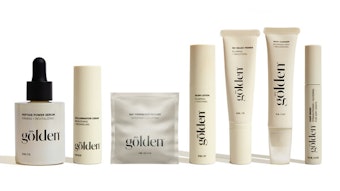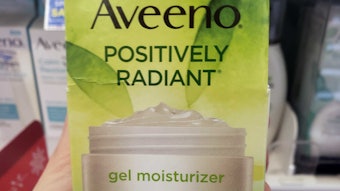In this thought experiment, industry expert Johann W. Wiechers, PhD, concludes that skin differences between the human races are often very small but sometimes very real...
So, I managed to do it all within a single month--not bad for a starting consultant in cosmetic science. To what am I referring? Within a single month, I booked flights to: Brisbane, Australia; Auckland, New Zealand; Shanghai, China; Bristol, United Kingdom; Sao Paulo, Brazil; Buenos Aires, Argentina; and Lima, Perú. In each of these countries I will meet representatives from local International Federation of the Societies of Cosmetic Chemists (IFSCC) societies, and will present on topics of cosmetic science.
Each trip will involve a new presentation but the same basic talk can be used in different corners of our spherical world since the probability of finding another person with the same enormous carbon footprint as mine is fairly slim. And what’s more, cosmetic science is a global business, so what is true on one side of the planet is probably true on the other side, don’t you think? Of course, until you consider ethnic products.
If the rationale for ethnic products is correct, then cosmetic science should be different in different places of the world. However, my behavior of using one basic talk in different corners of the world suggests that the science is the same. And if the science is the same, the products should be the same. So either I am wrong and there is indeed a different need amongst the various races on this planet, or our marketing colleagues have it wrong and the industry is selling stories. I know which one of the two I would prefer to be wrong, but let's explore this concept.
Many papers and reviews have been written about differences in skin permeability between ethnicities. When Japanese women were compared with European women in their perception of lactic acid-induced sting, the difference was profound. Japanese women suffered much more from the lactic acid than their European counterparts. In examining studies that have compared in vivo differences in skin barrier function between Asian, Black and Caucasian skin, one quickly concludes that based on methyl nicotinate penetration, Asian skin is by far the most permeable of the three, followed by Caucasian; and Black skin is the toughest of the three.
So there are differences and I am more wrong than I would like to admit; I should study the literature a bit better before stating an opinion that there are no differences between skins of different color. How could I have been so wrong? But now I recall another article describing skin penetration of acetylsalicylic acid, benzoic acid and caffeine, and I see that I was not wrong. That article showed no difference whatsoever between the three races in skin permeability. Because it is unlikely for both of us to be right, the search for truth continues. ...Although I cannot resist quoting my brother-in-law, a lawyer, who once said to me: “Johann, life is not about being right but about getting it right,” and I guess that is why he became a judge--so that he is always right!
A reduced skin barrier function should be able to explain an increased sensitivity of Asian skin; so if my theory is right, the transepidermal water loss (TEWL) of Asian skin should be higher than that of Black or Caucasian skin. So, back to the scientific literature...what do we see? To my astonishment, when TEWL values of Japanese and German women were compared, those of Japanese women were statistically significantly lower.... I am shooting myself in the foot here, and can already hear my marketing colleagues laughing in the background, saying, “We don’t need all this science, we know simply by listening to our customers!”
I must defend myself to maintain some credibility and argue that my marketing colleagues do not know why the TEWL of Japanese women was shown to be lower than that of German women. This fact could be caused by a stabilization of the orthorhombic skin lipid phase in their intercellular spaces... and then it hits me and I see the light: The methyl nicotinate penetration study and the lactic acid that showed Asian skin to be more permeable penetrate via pores; whereas the acetylsalicylic acid, benzoic acid and caffeine all penetrate via the bulk of the stratum corneum. If Asian skin has more pores, bigger pores, or cleaner pores perhaps because of spicier food that causes the pores to open wider, this could explain it all.
Asian skin seems to be more permeable but this could only be related to pores, whereas the least permeable skin lipid phase, the orthorhombic phase, may genetically be more stabilized in Asian skin. Finally, I know that I am right and can explain it all: Skin differences between the human races are often very small but sometimes very real. But by this time, I have completely lost my marketing colleagues. They’re already out there marketing sensitive skin creams to the Asian population. I may be right, but they are getting it right. And what's nice about our industry is that, in regards to this issue of ethnic skin, whether you are a cosmetic scientist being right or a cosmetic marketer getting it right, we’re both happy!
Johann W. Wiechers, PhD
Technical Advisor, Allured Publishing Corp.
Independent Consultant in Cosmetic Science, JW Solutions
Gasthuispolderweg 30 2807 LL Gouda, The Netherlands
[email protected]










